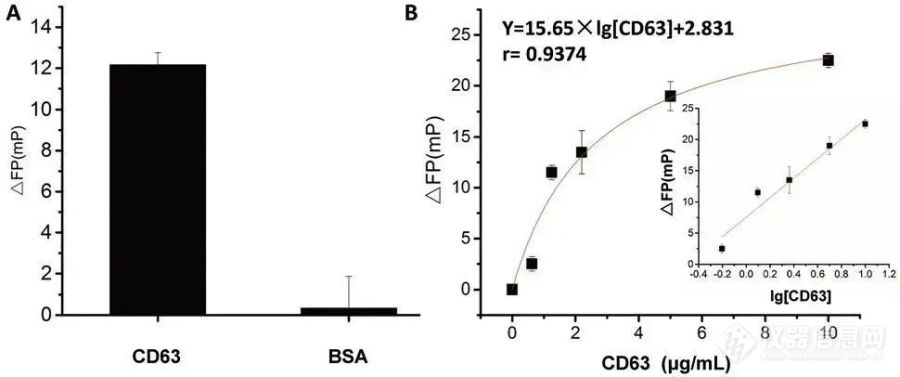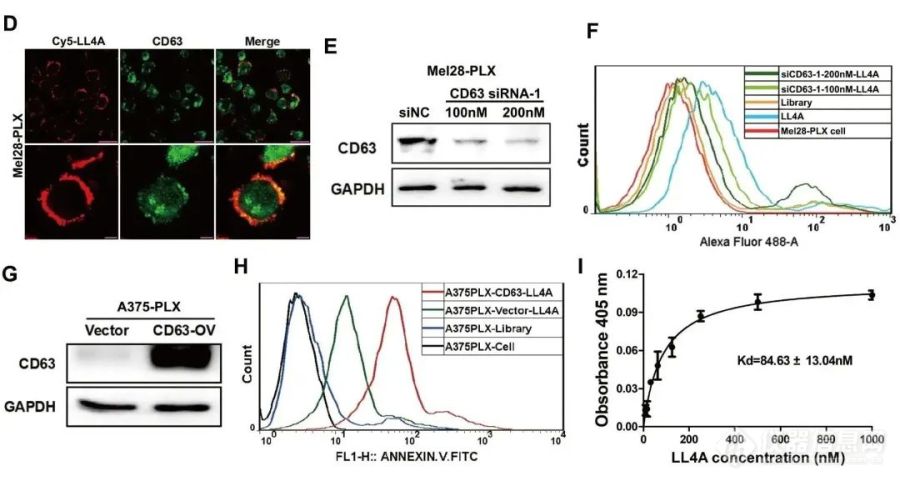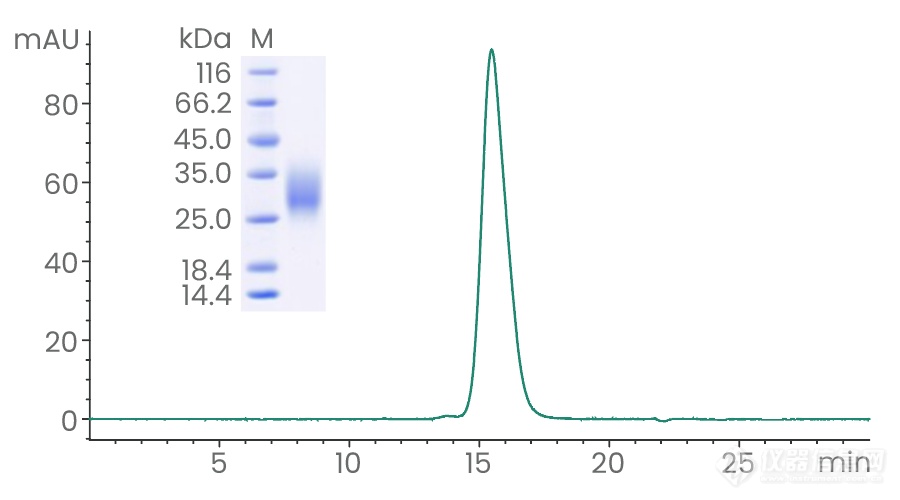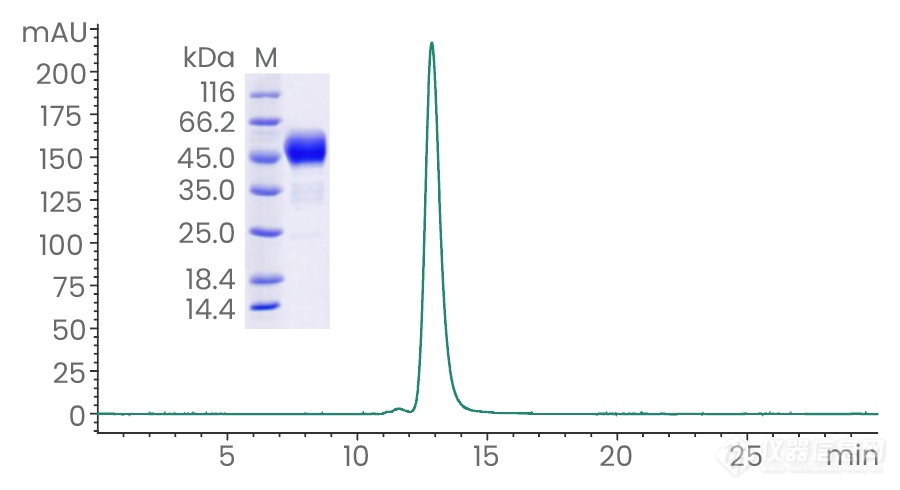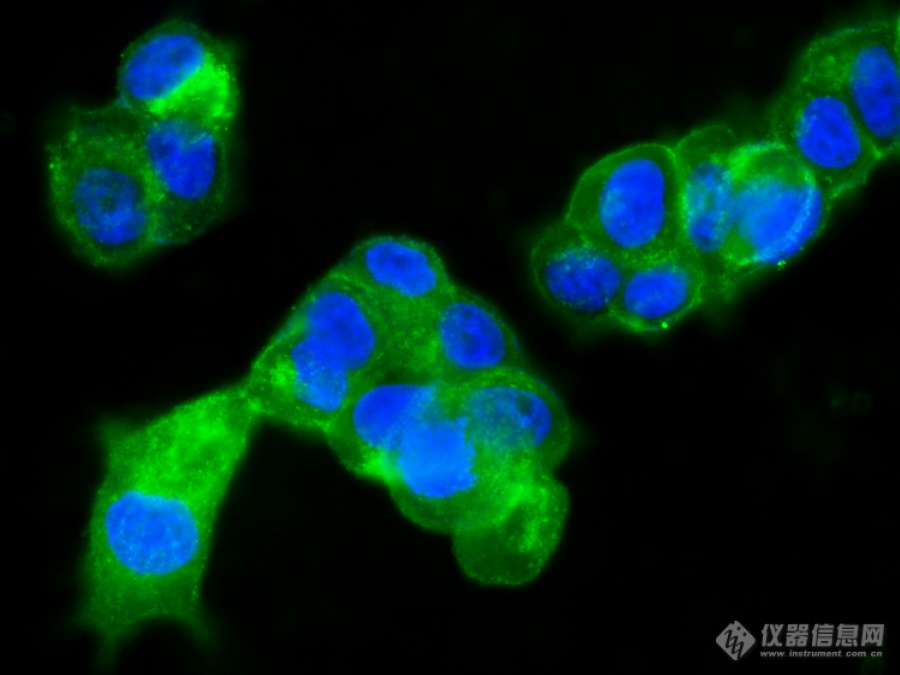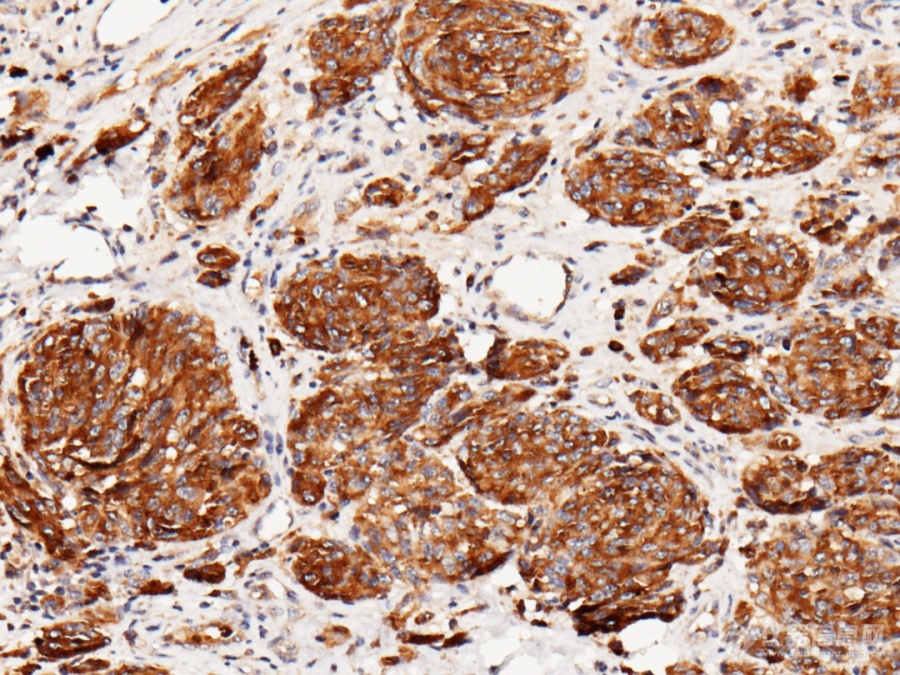
CD63 作为诊断及治疗一体化靶点
(源自:https://doi.org/10.1002/adbi.202300078)
| 药物 | 药物类型 | 适应证 | 临床阶段 |
| AAV-GAA gene therapy (Pompe disease) | 腺病毒相关病毒、酶、 重组病毒、抗体 | II型糖原累积病 | 临床前 |
| anti-CD63 fusion protein | 抗体偶联、融合蛋白、重组酶 | 溶酶体贮积症(LSD) | 临床前 |
Purity ≥ 95 % as determined by SDS-PAGE, ≥ 95 % as determined by SEC-HPLC.
Purity ≥ 95 % as determined by SDS-PAGE, ≥ 95 % as determined by SEC-HPLC.
Immunochemical staining of human CD63 in human malignant melanoma.
【参考文献】
1. Cheerathodi, M, et al. Epstein-Barr Virus LMP1 Modulates the CD63 Interactome. Viruses, 2021. https://doi.org/10.3390/v13040675
2. Yu, D, et al. Exosomes as a new frontier of cancer liquid biopsy. Molecular cancer, 2022. https://doi.org/10.1186/s12943-022-01509-9
3. Mosquera-Heredia, et al. Exosomes: Potential Disease Biomarkers and New Therapeutic Targets. Biomedicines, 2021. https://doi.org/10.3390/biomedicines9081061
4. Z. Song, et al. Development of a CD63 aptamer for efficient cancer immunochemistry and Immunoaffinity-Based exosome Isolation. Molecules, 2020. doi: 10.3390/molecules25235585.
5. Zhang, Z., et al. Aptamer-based fluorescence polarization assay for separation-free exosome quantification. Nanoscale, 2019. https://doi.org/10.1039/c9nr01589b
6. Li, H., et al. A Novel Aptamer LL4A Specifically Targets Vemurafenib-Resistant Melanoma through Binding to the CD63 Protein. Molecular therapy. Nucleic acids, 2019. https://doi.org/10.1016/j.omtn.2019.10.005
7. S. Tugues et al. Tetraspanin CD63 promotes vascular endothelial growth factor receptor 2-Β1 integrin complex formation, thereby regulating activation and downstream signaling in endothelial cells in vitro and in vivo. Journal of Biological Chemistry, 2013. doi: 10.1074/jbc.m113.468199.
8. Lema, D. A., & Burlingham, W. J. Role of exosomes in tumour and transplant immune regulation. Scandinavian journal of immunology, 2019. https://doi.org/10.1111/sji.12807
9. Valencia, J. C., Egbukichi, N., & Erwin-Cohen, R. A. Autoimmunity and Cancer, the Paradox Comorbidities Challenging Therapy in the Context of Preexisting Autoimmunity. Journal of interferon & cytokine research : the official journal of the International Society for Interferon and Cytokine Research, 2019. https://doi.org/10.1089/jir.2018.0060
10. W. Sun, J. Luo, H. Jiang, and D. Duan, Tumor exosomes: a double-edged sword in cancer therapy. Acta Pharmacologica Sinica, 2018. doi: 10.1038/aps.2018.17.
11. Akbari, A.,et al. Engineered Exosomes for Tumor-Targeted Drug Delivery: A Focus on Genetic and Chemical Functionalization. Pharmaceutics, 2022. https://doi.org/10.3390/pharmaceutics15010066
12. B. De Goeij et al. Efficient payload delivery by a bispecific Antibody–Drug conjugate targeting HER2 and CD63. Molecular Cancer Therapeutics, 2016. doi: 10.1158/1535-7163.mct-16-0364.
13. Dai, X., Ye, Y., & He, F. Emerging innovations on exosome-based onco-therapeutics. Frontiers in immunology, 2022. https://doi.org/10.3389/fimmu.2022.865245
14. Kim, J. H., Lee, C. H., & Baek, M. C. Dissecting exosome inhibitors: therapeutic insights into small-molecule chemicals against cancer. Experimental & molecular medicine, 2022. https://doi.org/10.1038/s12276-022-00898-7
15. Herrmann, I. K., Wood, M. J. A., & Fuhrmann, G. Extracellular vesicles as a next-generation drug delivery platform. Nature nanotechnology, 2021. https://doi.org/10.1038/s41565-021-00931-2
16. Rezaie, J., Feghhi, M., & Etemadi, T. A review on exosomes application in clinical trials: perspective, questions, and challenges. Cell communication and signaling : CCS, 2022. https://doi.org/10.1186/s12964-022-00959-4
17. H. Odaka, et al. CD63-positive extracellular vesicles are potential diagnostic biomarkers of pancreatic ductal adenocarcinoma. BMC Gastroenterology, 2022. doi: 10.1186/s12876-022-02228-7.
